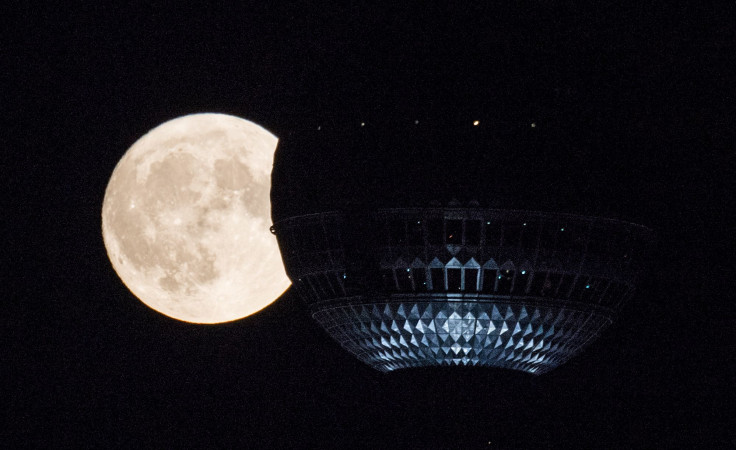Full Strawberry Moon: Don't Miss The Last Supermoon Of 2021
KEY POINTS
- "Strawberry Moon" is said to mark the ripening of "June-bearing" strawberries
- "Berries Ripen Moon," another term for it, suggests a similar meaning
- Other traditional terms for it include "Green Corn Moon" and "Birth Moon"
This month's full Strawberry Moon is set to rise this week and some people consider it as the last supermoon of the year.
The next full moon is set to rise on Thursday at 2:40 p.m. EDT, NASA said, but it will appear full for about three days starting early Wednesday morning. The last full moon of spring or the first full moon of summer, the June full moon, is typically called the "Strawberry Moon."
However, this doesn't mean that the moon will have a pinkish hue. Instead, the name "Strawberry Moon" is said to be used by the Algonquin, Ojibwe, Lakota and Dakota peoples, among others, because it marks the ripening of "June-bearing" strawberries that are ready to be harvested, the Old Farmer's Almanac explained. Another term for the full moon, the "Berries Ripen Moon," also suggests a similar meaning.
Other traditional names for this full moon include the "Green Corn Moon," which pertains to the time to tend to young crops, and the "Birth Moon" because it's the time of the year in the Pacific Northwest when some animals are born.
The last supermoon of 2021
Depending on one's interpretation of the term "supermoon," the Strawberry Moon may also be the last supermoon of 2021. Coined by Richard Nolle in 1979, the term simply refers to a full or new moon that's at 90% of its perigee or closest approach to Earth, NASA's Gordon Johnston said.
However, different publications may have different thresholds for determining which full moons can qualify as supermoons.
"For 2021, some publications consider the four full Moons from March to June, some the three full Moons from April to June, and some only the two full Moons in April and May as supermoons," Johnston said.
As such, some may consider the June full moon as the last supermoon of 2021, so skywatchers may not want to miss it. The moon won't be difficult to spot as long as there's not too much cloud cover. But those who have binoculars or even a simple backyard telescope can use them to have a spectacular view.
Others can also catch a glimpse of it via a livestream from Rome, courtesy of the Virtual Telescope Project.

© Copyright IBTimes 2025. All rights reserved.






















